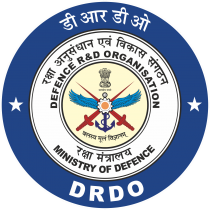Global Architectural Coatings Market Analysis 2017-2018 & 2019-2026 - ResearchAndMarkets.com
The "Architectural Coatings - Global Market Outlook (2017-2026)" report has been added to ResearchAndMarkets.com's offering.
Global Architectural Coatings market accounted for $59.29 billion in 2017 and is expected to reach $99.08 billion by 2026 growing at a CAGR of 5.9%
Growing demand from construction industry, increasing adoption of waterborne coating formulations and rising housing construction activities in emerging economies are the key driving factors for the market growth. In addition, the introduction of green coatings solutions and investments in emerging markets will provide ample opportunities for market growth. However, stringent regulations on the emissions of VOCs and other toxic chemicals are hindering the market growth.
Architectural coatings are the paints, coatings and sealers used to coat buildings and homes. Most of the coatings are applied to surfaces using sprayers, rollers and brushes. Most are designated for specific uses such as roof coatings, wall paints, or deck finishes. They are designed to provide a protective and decorative layer on the surface of an architectural fixture in both indoor and outdoor applications Powder particles or liquid film coatings are converted into solid film coatings through film drying, curing or forming processes like cross-linking evaporation, coalescence or fusion bonding.
Based on Resin, Acrylic Resin segment held considerable market share during the forecast period due to urbanization and infrastructure development in the construction sector. Excellent external durability of acrylic coatings has boosted consumption of acrylic coatings in applications such as architectural refinishes.
By geography, North America is expected to grow at a faster rate due to the increasing residential and non-residential constructions and growing demand for bio-based coating materials.
What the report offers:
- Market share assessments for the regional and country level segments
- Strategic recommendations for the new entrants
- Market forecasts for a minimum of 9 years of all the mentioned segments, sub segments and the regional markets
- Market Trends (Drivers, Constraints, Opportunities, Threats, Challenges, Investment Opportunities, and recommendations)
- Strategic analysis: Drivers and Constraints, Product/Technology Analysis, Porter's five forces analysis, SWOT analysis etc.
- Strategic recommendations in key business segments based on the market estimations
- Competitive landscaping mapping the key common trends
- Company profiling with detailed strategies, financials, and recent developments
-
Supply chain trends mapping the latest technological advancements
Key Topics Covered:
1 Executive Summary
2 Preface
2.1 Abstract
2.2 Stake Holders
2.3 Research Scope
2.4 Research Methodology
2.5 Research Sources
3 Market Trend Analysis
3.1 Introduction
3.2 Drivers
3.3 Restraints
3.4 Opportunities
3.5 Threats
3.6 Product Analysis
3.7 Technology Analysis
3.8 Application Analysis
3.9 Emerging Markets
3.10 Futuristic Market Scenario
4 Porters Five Force Analysis
4.1 Bargaining power of suppliers
4.2 Bargaining power of buyers
4.3 Threat of substitutes
4.4 Threat of new entrants
4.5 Competitive rivalry
5 Global Architectural Coatings Market, By Coating
5.1 Introduction
5.2 Exterior
5.3 Interior
5.4 Other Coating Types
5.4.1 Roofing
5.4.2 Wood
5.4.3 Flooring
6 Global Architectural Coatings Market, By Resin
6.1 Introduction
6.2 Alkyd Resin
6.3 Polyurethane Resin
6.4 Acrylic Resin
6.5 Vinyl Resin
6.6 Urethane
6.7 Pure Acrylics
6.8 Acetates
6.9 Styrene Acrylics
6.10 Fluoropolymers
6.11 Metallic Additive
6.12 Other Resins
6.12.1 Unsaturated Polyester Resin
6.12.2 Saturated Polyester Resin
6.12.3 Epoxy Resin
6.12.4 Poly Alkyds
6.12.5 Amines
7 Global Architectural Coatings Market, By Product
7.1 Introduction
7.2 Inks
7.3 Paints
7.4 Primers
7.5 Stains
7.6 Ceramics
7.7 Lacquers
7.8 Sealers
7.9 Varnishes
8 Global Architectural Coatings Market, By User Type
8.1 Introduction
8.2 Professional
8.3 Do it yourself (DIY)
9 Global Architectural Coatings Market, By Technology
9.1 Introduction
9.2 Solventborne Coatings
9.3 Emulsion Coatings
9.4 Powder Coatings
9.5 Waterborne Coatings
9.6 Other Technologies
10 Global Architectural Coatings Market, By Application
10.1 Introduction
10.2 Non-Residential
10.2.1 Industrial
10.2.2 Infrastructure
10.2.3 Commercial
10.2.4 Tunnels
10.2.5 Walkways
10.2.6 Bridges
10.3 Residential
10.3.1 Remodel and Repaint
10.3.2 New Construction
10.3.3 Basements
10.3.4 Ceilings
10.3.5 Roofs
10.3.6 Walls
10.4 Other Applications
11 Global Architectural Coatings Market, By Geography
11.1 Introduction
11.2 North America
11.2.1 US
11.2.2 Canada
11.2.3 Mexico
11.3 Europe
11.3.1 Germany
11.3.2 UK
11.3.3 Italy
11.3.4 France
11.3.5 Spain
11.3.6 Rest of Europe
11.4 Asia Pacific
11.4.1 Japan
11.4.2 China
11.4.3 India
11.4.4 Australia
11.4.5 New Zealand
11.4.6 South Korea
11.4.7 Rest of Asia Pacific
11.5 South America
11.5.1 Argentina
11.5.2 Brazil
11.5.3 Chile
11.5.4 Rest of South America
11.6 Middle East & Africa
11.6.1 Saudi Arabia
11.6.2 UAE
11.6.3 Qatar
11.6.4 South Africa
11.6.5 Rest of Middle East & Africa
12 Key Developments
12.1 Agreements, Partnerships, Collaborations and Joint Ventures
12.2 Acquisitions & Mergers
12.3 New Product Launch
12.4 Expansions
12.5 Other Key Strategies
13 Company Profiling
13.1 PPG Industries, Inc.
13.2 The SherwinWilliams Company
13.3 Akzo Nobel N.V.
13.4 BASF SE
13.5 Masco Corporation
13.6 RPM International Inc.
13.7 Carpoly Chemical Group Co., Ltd.
13.8 Nippon Paint Holdings Co., Ltd.
13.9 Lanco Paints
13.10 Asian Paints Limited
13.11 Kansai Paint Co., Ltd.
13.12 Jotun Group
13.13 Tikkurila OYJ
13.14 Hempel A/S
13.15 Benjamin Moore & Co.
For more information about this report visit https://www.researchandmarkets.com/r/1ud1ky
View source version on businesswire.com: https://www.businesswire.com/news/home/20190726005205/en/



